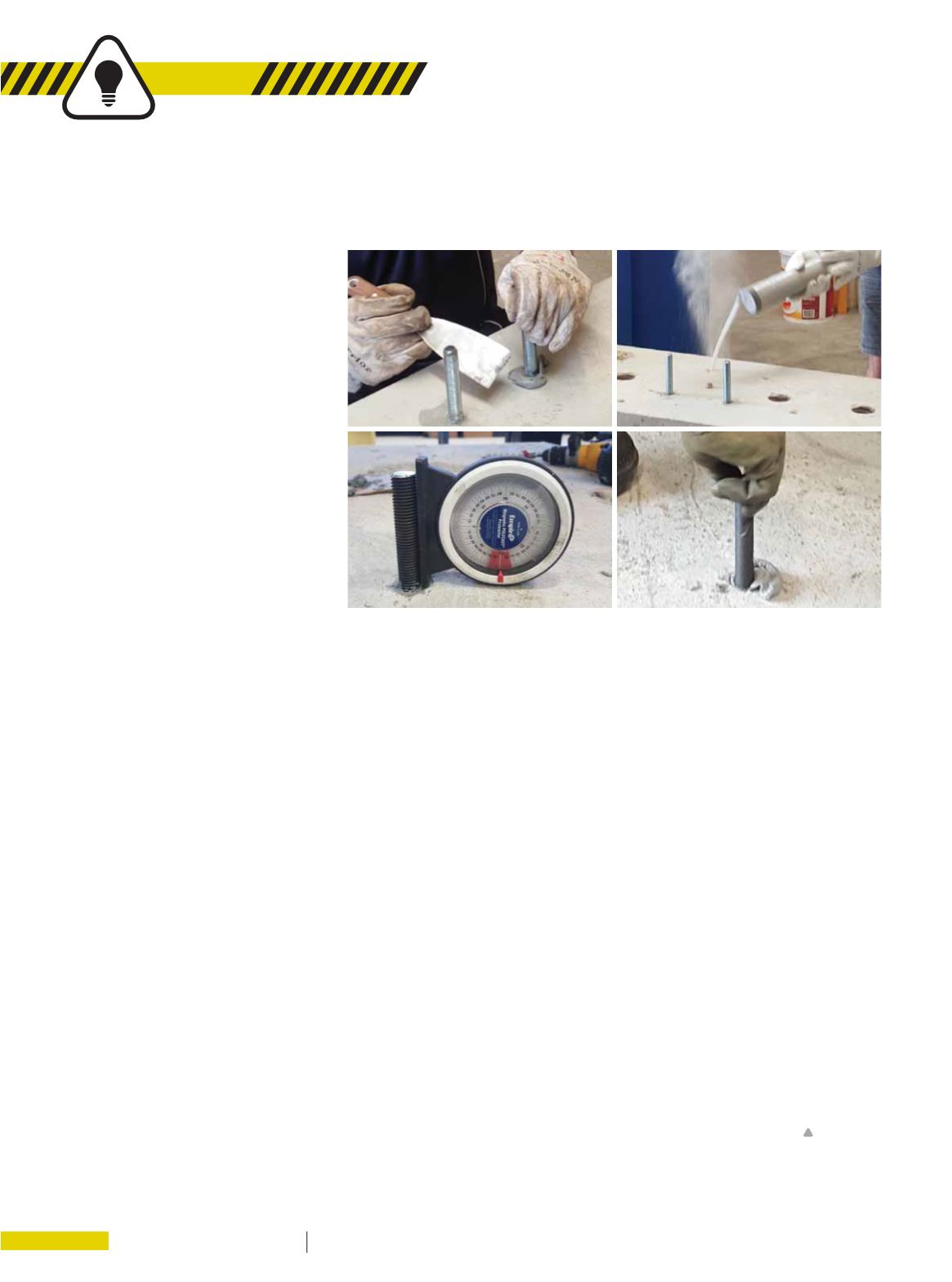

9 2
E L E C T R I C A L CO N N E C T I O N
S P R I N G 2 0 16
TIPS
T
he Australian Engineered Fasteners
and Anchors Council (AEFAC)
Installer Certification Program was
initiated as part of the industry initiative
to improve safety in anchor installation
and to bring it into line with international
practice. The program is based on the
American Concrete Institute (ACI) and the
Concrete Reinforcing Steel Institute (CRSI)
Adhesive Anchor Installer certification
program but extended to include
mechanical anchors and adapted for
Australian practice.
The Adhesive Anchor Installer program
in the US was developed and made
compulsory for installation of overhead
chemical anchors following the failure of
the Boston Big Dig Tunnel in 2006 where
26 tonnes of suspended ceiling panels
collapsed; killing a motorist and causing
a section of the tunnel to be closed for a
long period of time.
Poor installation practice was one
of the primary causes for the Boston
Big Dig Tunnel failure. The following
investigation found chemical in the
installed anchors supporting the ceiling
panels was not mixed properly; water and
voids in chemical were also found, leading
to unreliable performances of those
chemical anchors.
In Australia, the AEFAC is being
proactive by developing a safety
framework: enhancing the specifications,
design requirements and installation of
anchors through the SA TS 101:2015 and
AEFAC Installer Certification Program to
mitigate potential failures.
The AEFAC Installer Certification
Program was designed to equip and train
installers with best practice installation.
The program offers a half a day of face-
to-face training where installers are
introduced to the various types of post-
installed anchors and their suitability for
different applications.
Installers are shown the mechanics
of anchors and alerted to performance
sensitivity of different anchor types. For
example, cleanliness of drilled holes is
one of the most important considerations
for chemical anchors. Generally speaking,
a chemical anchor installed in an
uncleaned hole may have 50% reduction
in capacity.
In terms of mechanical anchors, they
are very sensitive to drilled hole diameter
and less sensitive to hole cleanliness than
chemical anchors. Using a worn out drill
bit may damage a mechanical anchor
while using an oversized drill bit will
result in the mechanical anchor not being
able to engage the concrete effectively
resulting in poor performance. Following
the face to face training session,
participants are required to undertake
written and practical exams. The written
exam has 65 multiple choice questions to
be answered in 60 minutes. All questions
in the written exam are covered in the
training.
The practical exam has two
components: a vertical down installation
where participants are required to
demonstrate their knowledge and skills in
performing a chemical anchor installation
according to the manufacturer’s
installation instructions and an overhead
injection using piston plug method.
Participants who pass both the written
and practical exams are awarded
an AEFAC Certified Installer Card
and are listed on the AEFAC website.
Recertification is required initially after
three years and subsequently every five
years to ensure installers are kept up-
to-date.
Proper installation practice is
imperative in ensuring anchors
installed in safety-critical applications
can achieve their intended design
performance. The AEFAC Installer
Certification Program provides general
instructions for commonly used
products and additional product-specific
training may be warranted.
>
AEFC
www.aefac.org.auANCHORED TO BEST PRACTICE
A new certification program
has been developed to ensure
that fasteners for safety-
critical applications are
installed by competent and
qualified installers. Australian
Engineered Fasteners and
Anchors Council training and
development manager
Jessey
Lee
explains.
















